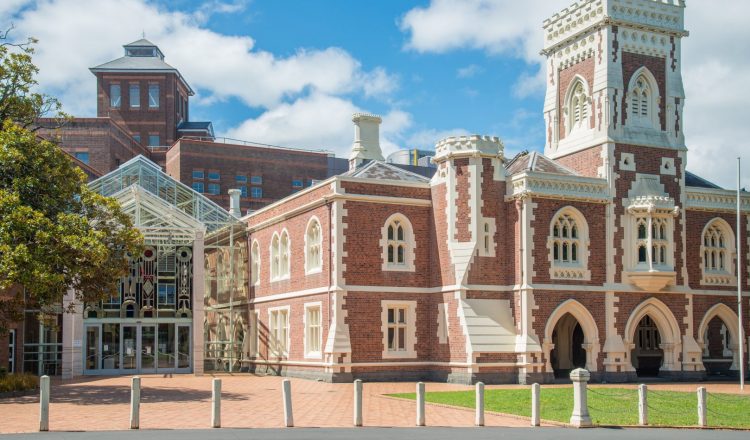Ra Tòa án
Cho dù bạn chỉ hỗ trợ một người thân, đưa ra bằng chứng hoặc tự bảo vệ mình tại tòa án, nó sẽ hầu như luôn luôn là một thời gian căng thẳng. Điều quan trọng là phải biết những gì sẽ xảy ra khi ra tòa tại New Zealand, vì vậy bạn phải chuẩn bị tốt và ít lo lắng về thử thách này.
Các quy tắc chung
Dưới đây là một số quy tắc chung cần nhớ khi tham dự tòa án.
- Tòa án ở New Zealand là một nơi rất trang trọng. Bạn nên mặc quần áo tối màu chặng hạn như com-lê và cà vạt hoặc tương đương. Đừng đội mũ hay kính mát.
- Đừng dùng điện thoại. Giữ điện thoại di động im lặng, không quay phim hoặc chụp ảnh trong khi tại tòa án.
- Có mặt đúng giờ. Tốt hơn hết bạn nên đến sớm và đợi xung quanh hơn là gây phiền toái cho trường hợp của bạn do đến muộn
- Không được ăn uống trong phòng xử án.
- Hãy đứng chờ thẩm phán. Thông thường người dân trong tòa án phải đứng im lặng vì sự xuất hiện và ra đi của thẩm phán như một dấu hiệu của sự tôn trọng. Bạn cũng phải đứng vững nếu thẩm phán đang trực tiếp nói chuyện với bạn.
- Nói chậm và rõ ràng. Những gì bạn nói tại tòa án là một phần quan trọng của quá trình pháp lý. Để tránh bất kỳ sai lầm nào, hãy chắc chắn nói chậm việc bạn cần nói và đừng ngại đánh vần tên của bạn nếu có thể sai lầm.
- Đừng thề.
- Đừng nói khi một nhân chứng đưa ra bằng chứng.
- Sử dụng các tiêu đề chính thức. Thẩm phán nên được gọi là Sir, Ma’am hoặc Honour. Các cá nhân khác có thể được gọi là “Mr” hoặc “Ms” và họ của họ.
- Mang theo tài liệu và bản sao nếu cần. Thủ tục pháp lý đòi hỏi rất nhiều giấy tờ, đảm bảo bạn có bất kỳ tài liệu nào mà tòa án yêu cầu. Mang thêm bản sao nếu cần.
*Thủ tục tố tụng của tòa án ở New Zealand thường được tiến hành bằng tiếng Anh. Nếu tiếng Anh không phải là ngôn ngữ đầu tiên của bạn và bạn cảm thấy như thể bạn cần một thông dịch viên để giúp bạn truyền đạt các bản tuyên bố của bạn tại tòa án, bạn phải điền vào mẫu “yêu cầu thông dịch viên”. Gửi mẫu đơn cho tòa án mà bạn sẽ tham dự trước phiên điều trần.
Tự đại diện tại Tòa án
Khi bạn đến tòa án, bạn sẽ phải đi qua an ninh. Nếu bạn không chắc chắn về nơi để đi các bước tiếp theo, bạn có thể yêu cầu một nhân viên tại tòa án để được hướng dẫn. Khi ở trong phòng xử án, bạn có thể được yêu cầu tuyên thệ hoặc khẳng định, đây là cam kết của bạn để nói sự thật. Sau khi thủ tục hoàn tất, nhân viên có thể giúp bạn thực hiện các bước tiếp theo, nhưng họ không thể tư vấn pháp lý cho bạn. Tư vấn pháp lý chỉ nên được tìm kiếm từ luật sư của bạn hoặc từ Cục Tư vấn của Công dân.
Bạn không cần một luật sư để đại diện cho bạn tại tòa án, bạn có thể chọn để đại diện cho mình nếu cần thiết. Tuy nhiên, việc đại diện đúng cách cho bản thân trước tòa sẽ cần rất nhiều nghiên cứu, chuẩn bị và quản lý trong một thời gian dài. Hầu hết các trường hợp có thể mất vài tháng để giải quyết, nhưng một số trường hợp có thể mất nhiều năm. Ngay cả khi bạn thắng trường hợp của bạn và có quyền nhận được bồi thường, thời gian và tiền bạc dành cho việc tự đại diện sẽ không được chi trả trong chi phí của tòa án.
Trước khi bạn xem xét việc tự đại diện, thường là một ý tưởng tốt để tìm lời khuyên pháp lý miễn phí từ Cục Tư vấn của Công dân hoặc Luật Cộng đồng vì chúng có thể giúp bạn đi đúng hướng. Nếu bạn muốn một luật sư nhưng không đủ khả năng thuê luật sư, bạn có thể được trợ giúp pháp lý.

















































